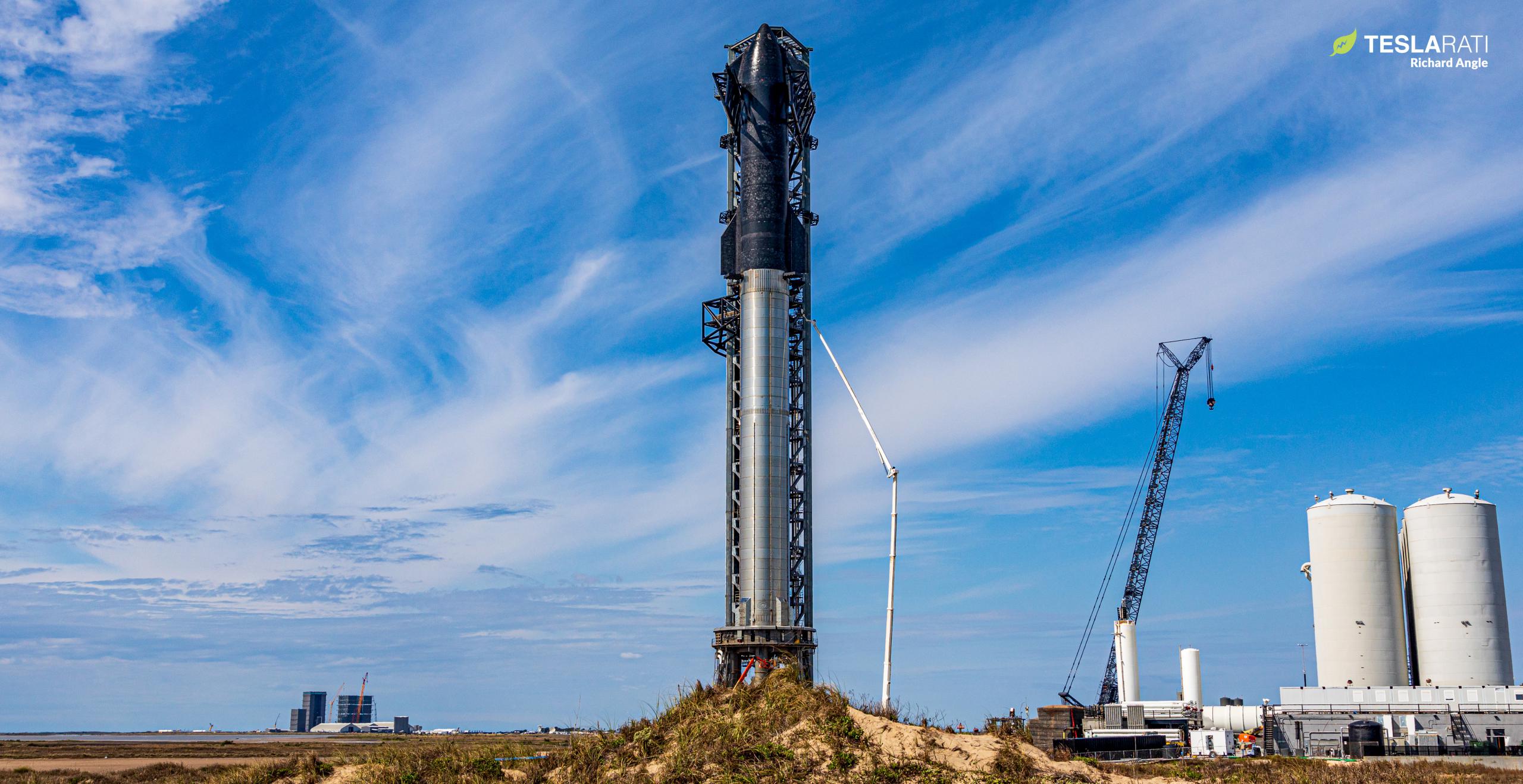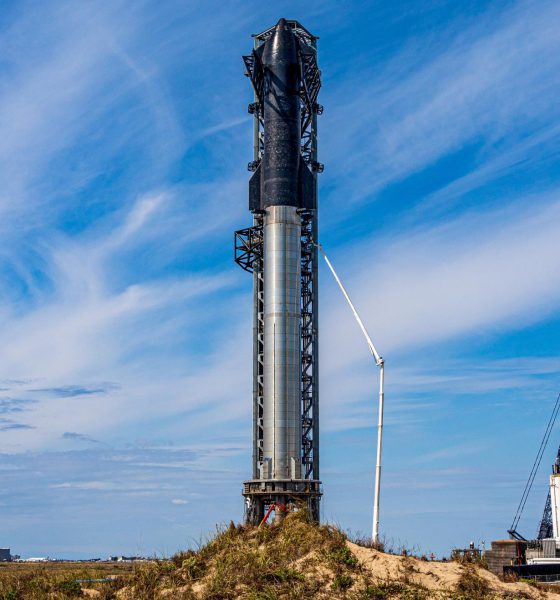

News
SpaceX’s Starbase environmental review delayed another month
The FAA says that it will take at least another month to complete a crucial environmental review of orbital Starship launches from SpaceX’s South Texas Starbase facilities.
The agency now expects that Starbase’s Programmatic Environmental Assessment (PEA) will be completed no earlier than March 28th, 2022, delaying the process at least another four weeks on top of an initial delay from December 31st, 2021 to February 28th, 2022. However, while the FAA gained some infamy for repeatedly delay SpaceX Starbase launch operations in late 2020 and early 2021, there is growing evidence that other US government agencies – not the FAA itself – are primarily responsible for most of the review’s delays.
Namely, information acquired through a Freedom Of Information Act (FOIA) request indicates that US Departments of Fish and Wildlife Services (FWS) and National Parks Services (NPS) are the primary sources of recent delays and the only real sources of discord this late in the process. As an example, as of the end of October 2021, the NPS had a list of at least 31 comments on SpaceX’s Starbase Draft PEA, each of which would have required a detailed response and additional back-and-forth to refine each response. The critiques and requests cover virtually every aspect of orbital Starship launches from Starbase, including FAA launch license details, recent SpaceX land acquisitions, impacts on a local Civil War battlefield landmark, pad lighting, air quality, noise, paint colors, road closures, Raptor thrust, contingency plans, and more.
Meanwhile, in a general review, the Department of the Interior (DOI) – speaking on behalf of the FWS and NPS – raised concerns about “launch site blast area hazards, closure of FWS and NPS lands, environmental justice (EJ) concerns, NHPA Section 106 and 110(f), [endangered] species, air quality emissions, and climate change impacts. It’s difficult to say how many of the concerns raised are actually serious. For example, the point repeatedly made by the DOI, FWS, and NPS is that hypothetical emissions from a natural gas power plant SpaceX proposed to build in its Draft PEA would violate EPA rules.
However, since that draft was published, there is growing evidence that SpaceX is behind a brand new power distribution line set to connect Boca Chica and Brownsville, Texas. The new lines appear to be sized to provide Starbase with enough power to entirely preclude the need for the construction of any dedicated power plants on site. Only a backup power source of some kind would be necessary. Assuming SpaceX is actually behind the development, it’s difficult to believe that the company hasn’t communicated that change of plans to the FAA and other Starbase PEA stakeholders.
As another example, the Fish and Wildlife Services’ own list of complaints includes the bizarre request that SpaceX increase its estimate for the number of failures that will occur during future Starship testing fivefold from 10% (already an extremely pessimistic figure) to 50% because “[nine] of 16 tests or hops that have occurred [at Starbase]…resulted in some type of anomaly with fire or debris.” While true that many of SpaceX’s developmental Starship tests have resulted in major failures or explosions, the FWS appears to fundamentally misunderstand the purpose of those failures and SpaceX’s approach to development, which is to learn from failures and prevent their reoccurrence. Something would have to go terribly wrong for half of all future Starship ground and flight tests to result in failure when SpaceX’s goal is to develop Starship into a reliable launch vehicle – not to futilely test prototypes forever.
Ultimately, it remains to be seen if SpaceX and the FAA will be able to secure the DOI, FWS, and NPS approvals required to finish the Starbase PEA. If the parties can’t come to some kind of agreement, SpaceX may be forced to effectively restart the environmental review process from scratch and pursue a more thorough Environmental Impact Statement (EIS). Completing an EIS could easily take years, potentially forcing SpaceX to give up on South Texas as a site for regular orbital Starship launches.
While CEO Elon Musk recently implied that SpaceX would never abandon Starbase and might use the site as a sort of dedicated research and development facility, it’s difficult to believe that the cost of operating and maintaining an entire Starship factory and orbital launch site would make sense from a programmatic or financial perspective given that SpaceX appears likely to build a Florida Starbase for East Coast Starship launches. SpaceX already has full environmental approval to launch 24 Starships per year from its Kennedy Space Center Pad 39A facilities.

Elon Musk
Elon Musk and Tesla AI Director share insights after empty driver seat Robotaxi rides
The executives’ unoccupied tests hint at the rapid progress of Tesla’s unsupervised Robotaxi efforts.

Tesla CEO Elon Musk and AI Director Ashok Elluswamy celebrated Christmas Eve by sharing personal experiences with Robotaxi vehicles that had no safety monitor or occupant in the driver’s seat. Musk described the system’s “perfect driving” around Austin, while Elluswamy posted video from the back seat, calling it “an amazing experience.”
The executives’ unoccupied tests hint at the rapid progress of Tesla’s unsupervised Robotaxi efforts.
Elon and Ashok’s firsthand Robotaxi insights
Prior to Musk and the Tesla AI Director’s posts, sightings of unmanned Teslas navigating public roads were widely shared on social media. One such vehicle was spotted in Austin, Texas, which Elon Musk acknowleged by stating that “Testing is underway with no occupants in the car.”
Based on his Christmas Eve post, Musk seemed to have tested an unmanned Tesla himself. “A Tesla with no safety monitor in the car and me sitting in the passenger seat took me all around Austin on Sunday with perfect driving,” Musk wrote in his post.
Elluswamy responded with a 2-minute video showing himself in the rear of an unmanned Tesla. The video featured the vehicle’s empty front seats, as well as its smooth handling through real-world traffic. He captioned his video with the words, “It’s an amazing experience!”
Towards Unsupervised operations
During an xAI Hackathon earlier this month, Elon Musk mentioned that Tesla owed be removing Safety Monitors from its Robotaxis in Austin in just three weeks. “Unsupervised is pretty much solved at this point. So there will be Tesla Robotaxis operating in Austin with no one in them. Not even anyone in the passenger seat in about three weeks,” he said. Musk echoed similar estimates at the 2025 Annual Shareholder Meeting and the Q3 2025 earnings call.
Considering the insights that were posted Musk and Elluswamy, it does appear that Tesla is working hard towards operating its Robotaxis with no safety monitors. This is quite impressive considering that the service was launched just earlier this year.
Elon Musk
Starlink passes 9 million active customers just weeks after hitting 8 million
The milestone highlights the accelerating growth of Starlink, which has now been adding over 20,000 new users per day.

SpaceX’s Starlink satellite internet service has continued its rapid global expansion, surpassing 9 million active customers just weeks after crossing the 8 million mark.
The milestone highlights the accelerating growth of Starlink, which has now been adding over 20,000 new users per day.
9 million customers
In a post on X, SpaceX stated that Starlink now serves over 9 million active users across 155 countries, territories, and markets. The company reached 8 million customers in early November, meaning it added roughly 1 million subscribers in under seven weeks, or about 21,275 new users on average per day.
“Starlink is connecting more than 9M active customers with high-speed internet across 155 countries, territories, and many other markets,” Starlink wrote in a post on its official X account. SpaceX President Gwynne Shotwell also celebrated the milestone on X. “A huge thank you to all of our customers and congrats to the Starlink team for such an incredible product,” she wrote.
That growth rate reflects both rising demand for broadband in underserved regions and Starlink’s expanding satellite constellation, which now includes more than 9,000 low-Earth-orbit satellites designed to deliver high-speed, low-latency internet worldwide.
Starlink’s momentum
Starlink’s momentum has been building up. SpaceX reported 4.6 million Starlink customers in December 2024, followed by 7 million by August 2025, and 8 million customers in November. Independent data also suggests Starlink usage is rising sharply, with Cloudflare reporting that global web traffic from Starlink users more than doubled in 2025, as noted in an Insider report.
Starlink’s momentum is increasingly tied to SpaceX’s broader financial outlook. Elon Musk has said the satellite network is “by far” the company’s largest revenue driver, and reports suggest SpaceX may be positioning itself for an initial public offering as soon as next year, with valuations estimated as high as $1.5 trillion. Musk has also suggested in the past that Starlink could have its own IPO in the future.
News
NVIDIA Director of Robotics: Tesla FSD v14 is the first AI to pass the “Physical Turing Test”
After testing FSD v14, Fan stated that his experience with FSD felt magical at first, but it soon started to feel like a routine.

NVIDIA Director of Robotics Jim Fan has praised Tesla’s Full Self-Driving (Supervised) v14 as the first AI to pass what he described as a “Physical Turing Test.”
After testing FSD v14, Fan stated that his experience with FSD felt magical at first, but it soon started to feel like a routine. And just like smartphones today, removing it now would “actively hurt.”
Jim Fan’s hands-on FSD v14 impressions
Fan, a leading researcher in embodied AI who is currently solving Physical AI at NVIDIA and spearheading the company’s Project GR00T initiative, noted that he actually was late to the Tesla game. He was, however, one of the first to try out FSD v14.
“I was very late to own a Tesla but among the earliest to try out FSD v14. It’s perhaps the first time I experience an AI that passes the Physical Turing Test: after a long day at work, you press a button, lay back, and couldn’t tell if a neural net or a human drove you home,” Fan wrote in a post on X.
Fan added: “Despite knowing exactly how robot learning works, I still find it magical watching the steering wheel turn by itself. First it feels surreal, next it becomes routine. Then, like the smartphone, taking it away actively hurts. This is how humanity gets rewired and glued to god-like technologies.”
The Physical Turing Test
The original Turing Test was conceived by Alan Turing in 1950, and it was aimed at determining if a machine could exhibit behavior that is equivalent to or indistinguishable from a human. By focusing on text-based conversations, the original Turing Test set a high bar for natural language processing and machine learning.
This test has been passed by today’s large language models. However, the capability to converse in a humanlike manner is a completely different challenge from performing real-world problem-solving or physical interactions. Thus, Fan introduced the Physical Turing Test, which challenges AI systems to demonstrate intelligence through physical actions.
Based on Fan’s comments, Tesla has demonstrated these intelligent physical actions with FSD v14. Elon Musk agreed with the NVIDIA executive, stating in a post on X that with FSD v14, “you can sense the sentience maturing.” Musk also praised Tesla AI, calling it the best “real-world AI” today.








